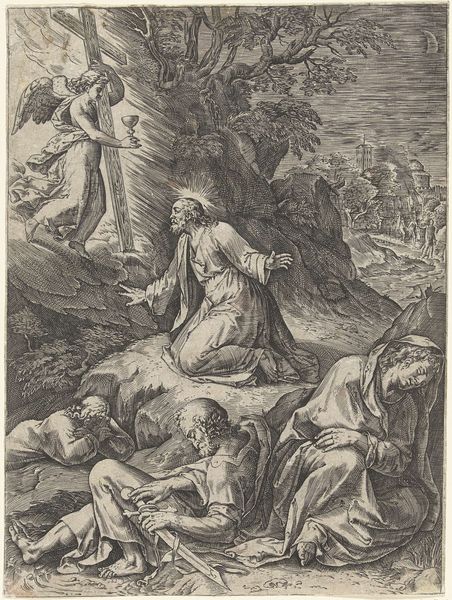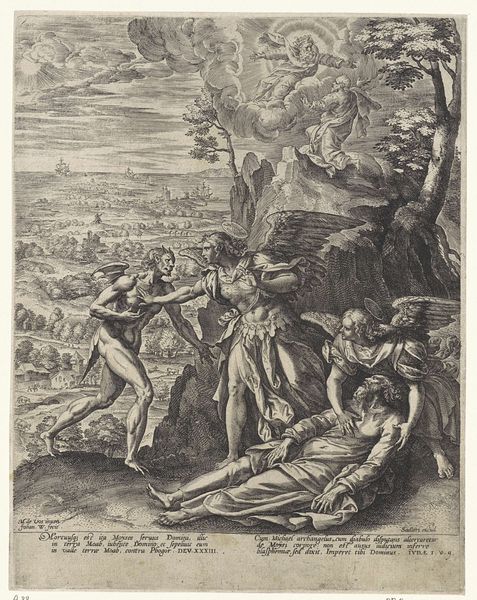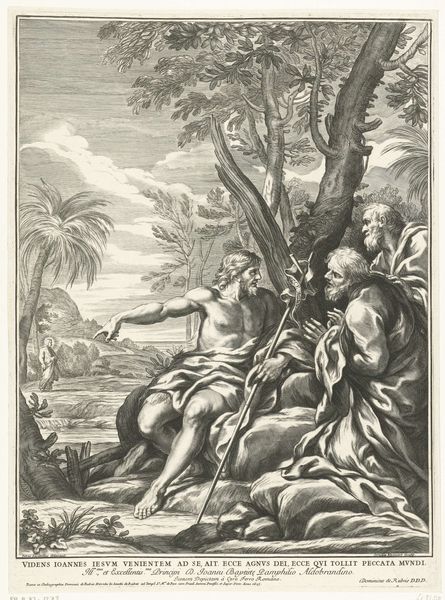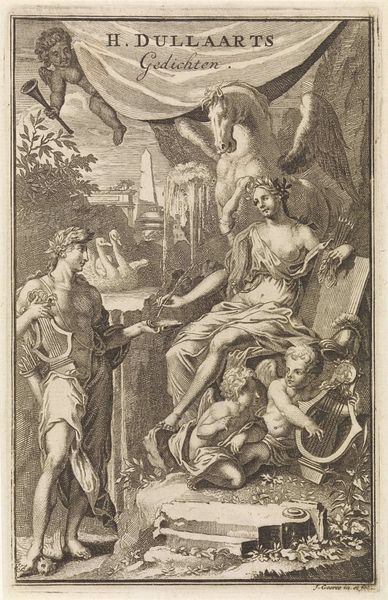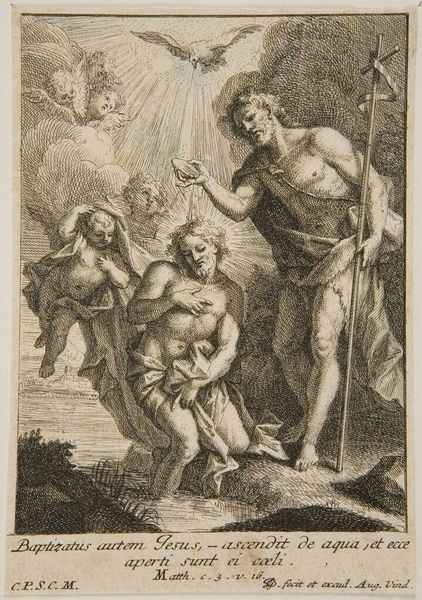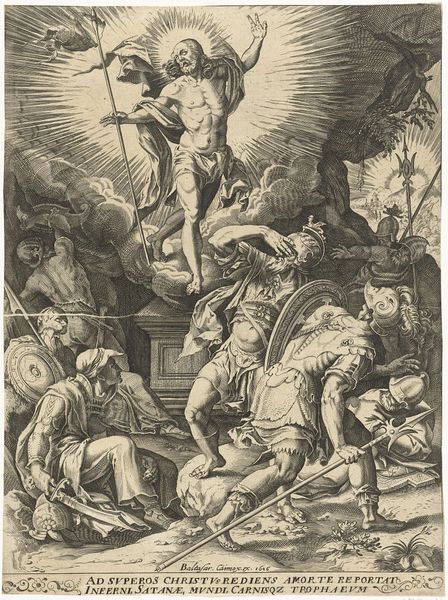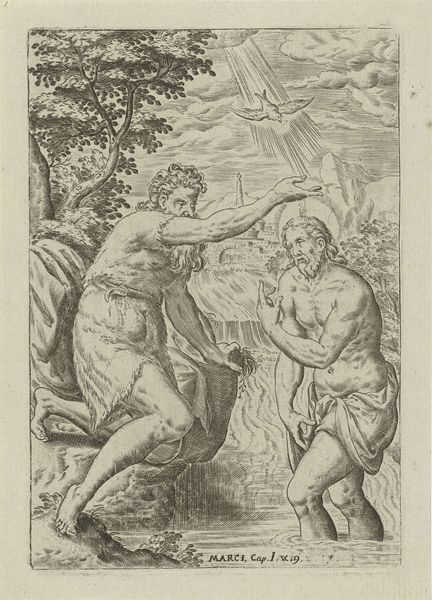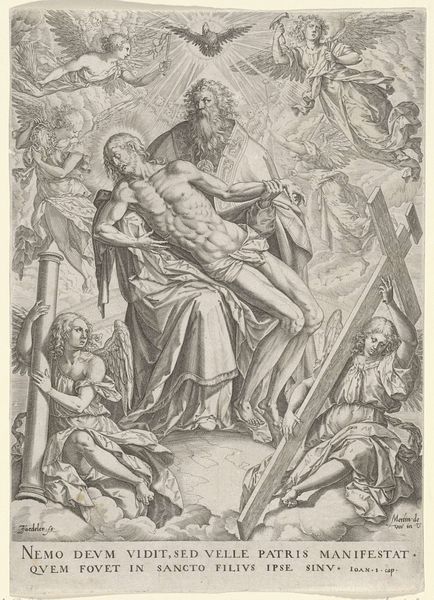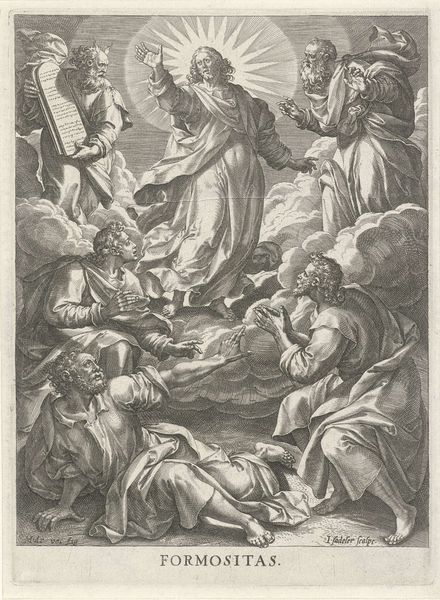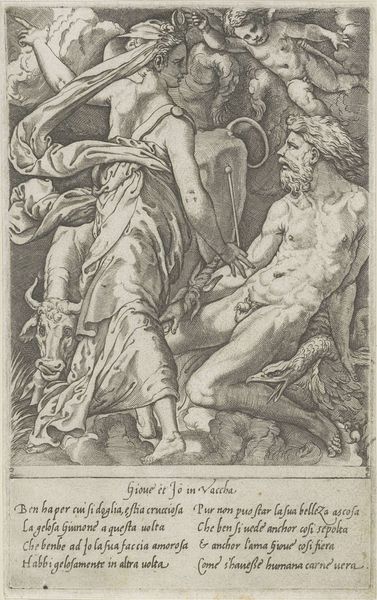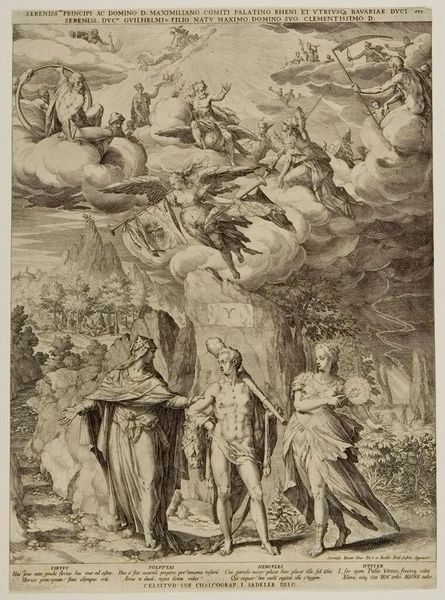
pen drawing
mechanical pen drawing
pen illustration
pen sketch
pencil sketch
junji ito style
pen-ink sketch
pen work
tattoo art
pencil art
Dimensions: height 143 mm, width 105 mm
Copyright: Rijks Museum: Open Domain
Curator: This pen drawing, "Christus in de hof van Gethsemane," was created by Zacharias Dolendo between 1596 and 1598. It's currently held here at the Rijksmuseum. What strikes you most about this piece? Editor: The detail. The cross-hatching and line work build up such a rich texture, it’s like a tapestry made of ink. You can almost feel the rough bark of the trees. Curator: Dolendo was working in a time of intense religious and political upheaval, with the Dutch Revolt in full swing. Prints and drawings like this played a key role in shaping public opinion. This scene of Christ's anguish was a potent symbol. Editor: Right, and consider the material reality—the paper itself, the specific ink he used, how that ink interacted with the paper. The very act of drawing, the labor put into each precise line…that's where the power comes from. Religious themes resonated with the public on multiple levels, especially because so many people knew what being oppressed by political force was like, just like what Christ went through. Curator: Exactly! The meticulous detail, intended to provoke an emotional and intellectual response, also acted as a mirror reflecting societal anxieties. It really captures a turning point in Dutch society as they shifted from the subjugation under Spanish reign and moved toward a more independent nation. Editor: Also, note the repetitive nature of the hatching; a mechanical pen drawing is almost like a mass-produced craft good itself, disseminating ideology through production as well as content. The physicality of those materials connects us to the labor and the beliefs of the time. Curator: Absolutely, it connects the spiritual message with very real earthly concerns and socio-political matters of the day. That approach allowed more accessibility for lower class folk and less elitist ideals for consumption of devotional and political messaging. It's not just about faith; it’s about survival. Editor: So, when we stand before a drawing like this, we should appreciate the layers of social context that contributed to both its existence and function within the early Dutch republic. It goes beyond what is represented in this landscape with figures of spiritual import and towards what kind of people made such drawings important and desirable at the time. Curator: Precisely, to truly consider this image, we should evaluate not only the narrative and technique on display but consider the era that demanded it as an art form. Editor: And understand how humble materials can give powerful voice to complex social experiences, in turn.
Comments
No comments
Be the first to comment and join the conversation on the ultimate creative platform.
